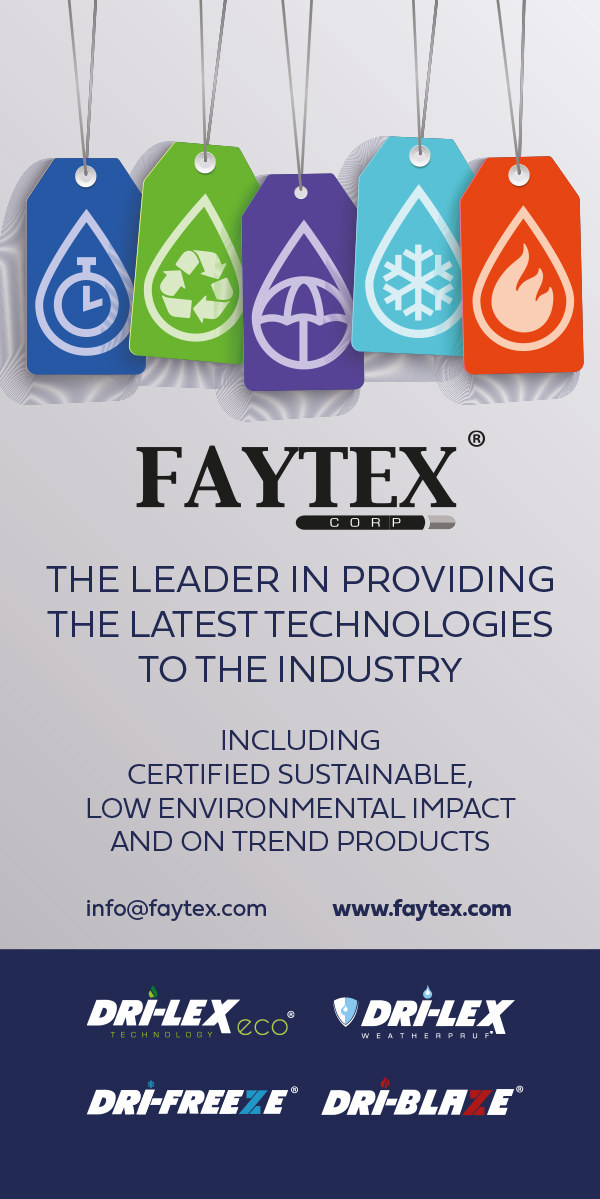PrimeAsia looks towards a bright future

The leather manufacturer has set out an ambitious new strategy to give its clients access to verified data to weave into their own carbon reduction and sustainability targets.
From its vantage point, PrimeAsia’s leather manufacturing shows no sign of slowing, according to the tannery group, which is undergoing an expansion at its Vietnamese plant to boost capacity there from six million to eight million square-feet per month. The leather manufacturer, which also has operations in China and is headquartered in the US and Taiwan, has unveiled plans for a wide-ranging sustainability strategy called ‘Sustaining Excellence, Preserving Tomorrow’, which will help reduce its footprint and provide data that its clients can use in their own product or company calculations.
PrimeAsia’s strategy is created and guided by the group’s chief sustainability officer, Camille Mori, who joined at the start of 2023. The initiative will be based around four pillars: added to the current Operational Excellence will be Circularity, Climate Action and Social Impact. “Under Operational Excellence we are looking to continuously improve our management systems for compliance management, traceability, chemical management and resource management,” Ms Mori tells World Footwear. “With Social Impact, we are continuing to give back to communities where we operate, will be tracking progress toward worker wellbeing programmes throughout our value chain, and will be disclosing wage data and tracking wages against the Global Living Wage Benchmark.”
Measurable impact
One of the key themes that underpins the strategy is that of producing and providing quantified data that can be used as benchmarks within the group and by its customers. PrimeAsia is partnering Spin360, a consultancy led by Federico Brugnoli that specialises in mapping carbon footprints in the leather supply chain. Their joint work includes collecting and analysing data for an expanded Lifecycle Assessment which includes more products and an increase of primary data, and conducting a carbon footprint analysis to develop carbon reduction targets to submit to the Science Based Targets Initiative (SBTi), an organisation that developed industry standards for companies to meet greenhouse gas reduction targets.
The aim is to have near-and longer-term targets approved by SBTi during 2025, plus align with Science Based Targets for Nature to set strategies for water, land use and biodiversity. “It is vital for us to follow industry standards for calculating and reporting on climate action so we are following the same protocols as our brand customers and supply chain partners who have also set SBTi targets,” explains Ms Mori. “This will help with disclosing carbon accounting data to our suppliers who are counting on us to reduce our emissions as part of their scope 3 [manufacturers’] targets.”
PrimeAsia specialises in footwear leathers, supplying to global shoe brands such as Nike and adidas. For these types of companies, offering transparency in their supply chains will become more important, potentially driven by incoming legislation in Europe that requires Digital Product Passports, with information on components and ingredients. These brands will lean on their suppliers to help them meet their own targets. “Our customers are asking for data and evidence to show our progress, and we intend to offer this transparency,” adds Ms Mori, who has experience of what the brands will need, having joined PrimeAsia from PVH Corp.
Circular advances
Circularity is a central tenet of the strategy, building on the truism that hides are a byproduct of the food industry. The group is also researching avenues for its leather waste and packaging within the tanneries and partner footwear factories. It has been increasing the volume of recycled water the tanneries use, hitting the 60% mark on average last year. The target is to use only recycled water for leather production in the tanneries by 2040 or earlier.
All of these sustainability improvements require time, investment and commitment. To make sure these commitments stay on track, PrimeAsia is recruiting more people to its sustainability team, to add to its rollcall of over 3,000 employees based across its manufacturing sites as well sales and marketing teams in India, Indonesia, Taiwan, Thailand, the UK and US.
Collaborating with supply chain partners and the wider sector will also be key to creating an industry-wide impact on the big issues, Ms Mori believes. “There is also a lot of momentum in groups like the Leather Working Group to drive industry approaches and solutions to big challenges like traceability, carbon reduction and biodiversity.”
Expansion plans
As part of the expansion of the facility in Ba Ria-Vung Tau province in southern Vietnam, new technology is being added to improve its energy, waste and water management, as well as a new retanning and colouring mezzanine and will also include eight new fully automated production drums. The current sample retanning and colouring area will be relocated to a newly constructed dedicated building. It is also updating the pigment finishing lines to support growing demand for athletic leathers, new drying and conditioning equipment, new equipment for splitting, shaving and buffing, and a significant upgrade to the wastewater treatment plant and solid waste handling technologies. To help meet its renewable energy targets, solar panels are being added to the roof. “While the stated focus is building capacity, the underlying mission is to make positive adjustments within the tannery, and leather making process, that will allow PrimeAsia to produce leather more efficiently and faster while maintaining high quality standards,” says PrimeAsia CEO Jonathan Clark.
An increase in demand for retro-looking athletic shoes has seen a multitude of leather and suede designs from footwear brands over recent years, and shows no sign of slowing. Leather’s credentials only feed into the growing desire to move away from plastic, too, adds Ms Mori. “From a sustainability perspective, I see a lot of opportunities for the future of leather,” she says. “As there is more focus on durable, long-lasting products and moving away from fossil fuel derived materials, we see a bright future for leather.”
Overview of PrimeAsia’s Vietnam tannery.
All credits: PrimeAsia












